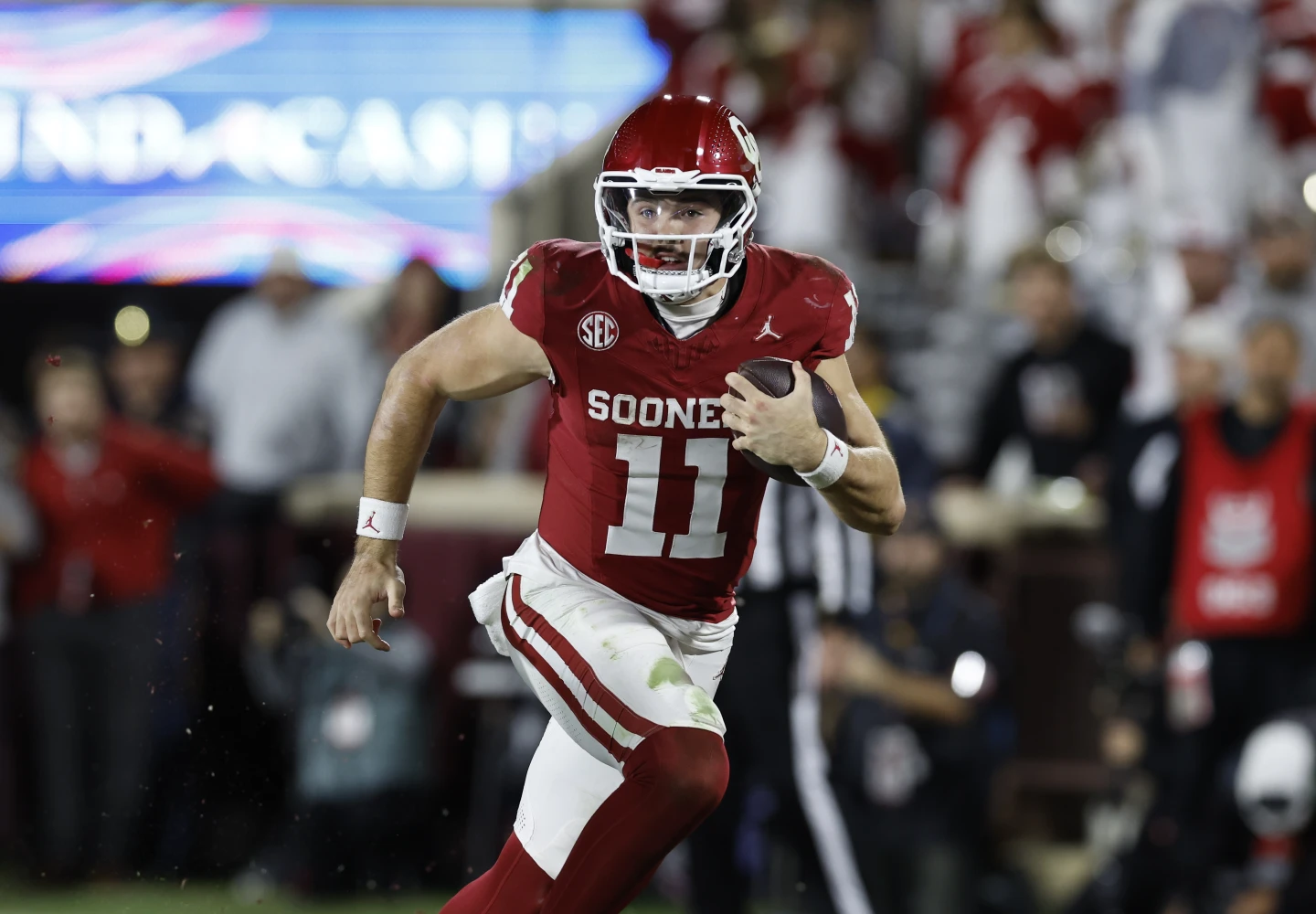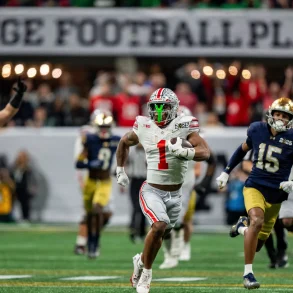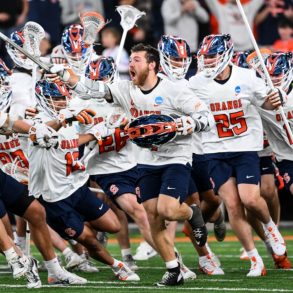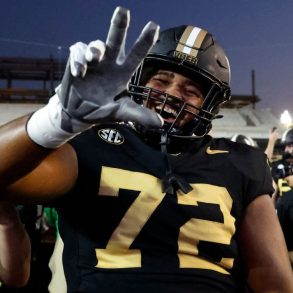Oklahoma seems to have looked to its past to fix its recent offensive struggles.
The Sooners, known for their passing attack that has produced four Heisman-winning quarterbacks, shifted to a more old-fashioned style of play against then-No. 7 Alabama. They ran the ball 50 times for 257 yards and only passed 12 times in a 24-3 victory that eased coach Brent Venables’ job security. The offense looked more like the teams led by Barry Switzer in the 1970s and ’80s, who dominated the old Big 8 with the wishbone offense, rather than the more recent Air Raid offenses.
Venables explained that the shift was necessary because of injuries to the team’s wide receivers and offensive line.
“I think this staff has done a really good job with trying to figure that out, get better every week, put together a great game plan but also figure out, ‘OK, what does this group of guys, what does this team — what do we need to do?’” Venables said.
To make the new approach work, Oklahoma had to believe it could succeed in the modern Southeastern Conference, all while being guided by an interim play-caller, Joe Jon Finley, who stepped in after Seth Littrell was fired last month.
Oklahoma (6-5, 2-5 SEC) managed to pull it off, and LSU coach Brian Kelly has noticed as they prepare to face each other on Saturday.
“This is now much more about controlling the football, running the football, playing with physicality,” Kelly said. “They’ve got perimeter skill, but I think it’s centered around much more of a run-centric, quarterback run and take care of the football.”
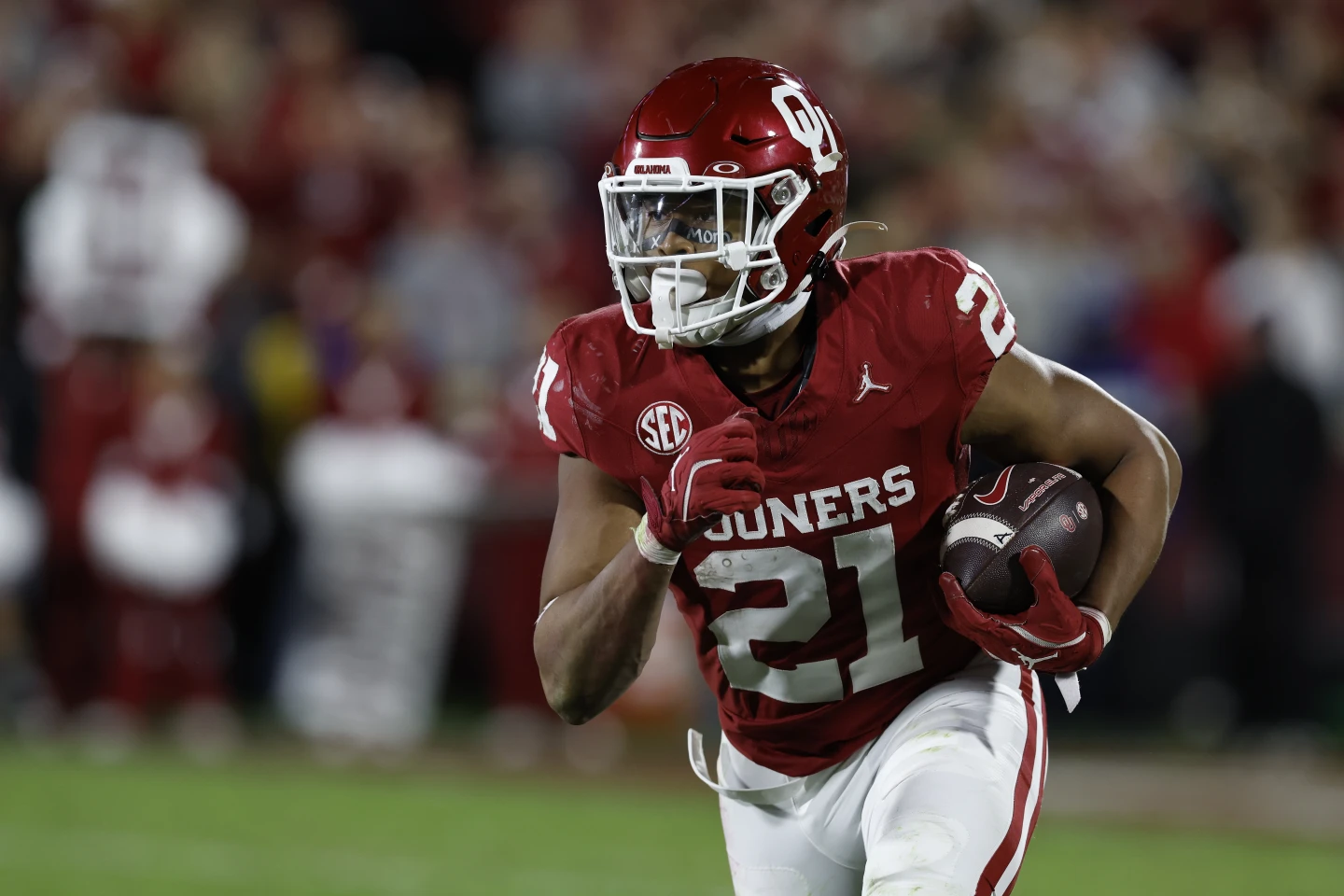
Oklahoma began to find success on the ground in a game against Maine. They ran 52 times for 381 yards in a 59-14 win, with Jovantae Barnes rushing for career highs of 203 yards and three touchdowns.
Venables felt the timing of the non-conference game against Maine in early November was perfect for figuring things out.
“Everybody has some degree of vulnerability and maybe some self-doubt,” he said. “And just developing some confidence and putting something on tape other than practice, like, ‘Man, look, see what you’re capable of?’ And executing against, again, a well-coached team — certainly, we played off of that in all the right ways like you would expect us to. And so there’s a real place for that.”
After a bye week, the Sooners tried the same approach against Missouri. It wasn’t as successful — they ran 36 times for 122 yards — but they fought hard before losing 30-23.
Then came Alabama. Jackson Arnold, who threw 45 times in last year’s Alamo Bowl, ran the ball 25 times for 131 yards and threw only 11 passes.
The Sooners also discovered running back Xavier Robinson, who stepped in for the injured Barnes. Robinson ran 18 times for 107 yards and two touchdowns, both career highs.
This new focus on the run game allowed the offense to control the tempo and the line of scrimmage. Oklahoma kept the ball for over 34 minutes against Alabama, helping to support a defense that had spent too much time on the field.
This running-focused approach could be key when they face LSU on Saturday. The Tigers (7-4, 4-3) rank 14th out of 16 SEC teams against the run.
Venables said the Sooners still need to pass effectively to win, but he is pleased to know his team can run the ball with power when needed.
“I think that’s the art of having a system that’s adjustable, flexible, adaptable, week in and week out, but also has an identity — toughness, physicality,” he said. “You’ve got to be able to run the ball at every level of football, but you do have to throw it. You can’t just do one thing. But we need to be efficient.”



